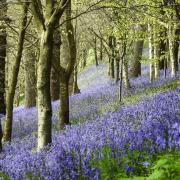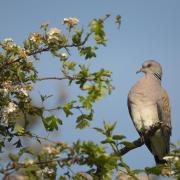The growth of the Thames Gateway and subsequent rise of brownfield sites has had a huge impact on wildlife in the area
North Kent is well known for its mudflats and grazing marsh. Together with the Medway and Swale Estuaries, and similar habitats on the south coast of Essex, the area supports hundreds of thousands of over-wintering, passage and breeding birds. These come for the invertebrates and plants that can be found in the grazing marshes, reedbeds, saltmarshes and intertidal muds; together forming a complex and delicate ecosystem.
The international importance of these habitats is recognised in a series of national, European and international conservation designations, their aim to divert harmful activities and developments elsewhere and protect the environment for current and future generations.
It’s not just the terrestrial and inter-tidal areas that are important; the estuaries provide important nurseries for fish, playing an important role in maintaining North Sea fish stocks.
Seals breed around the North Kent coast, and porpoises can be seen feeding in the waters of the Medway and Thames.
Last year the Medway Estuary was designated a Marine Conservation Zone, and the Swale and Thames are also deserving of such a designation, with a public consultation due later this year.
This is a polarised landscape, however; the big skies are punctuated with the chimneys and cranes of the energy, construction and shipping industry that the area is equally, if not better known, for.
Over the past several decades the rise of industry, and its subsequent fall in places, has resulted in one of the densest concentrations of brownfield sites in the country. Owing to this, the area was thought ideal for the expansion of London and the south east’s needs, and this proposed growth area became known as the Thames Gateway.
Unfortunately for much of the wildlife, particularly those species associated with flower-rich areas, intensification of farming has resulted in the loss of much of their natural habitat and forced them onto some of these brownfield sites.
The best of these sites have been dubbed ‘Open Mosaic Habitats on Previously Developed Land’ and are recognised as priority habitats for conservation.
While only a proportion of brownfield sites are important for wildlife, the prioritisation of the development of such sites can cause catastrophic loss of wildlife.
These sites have not been subject to agricultural ‘improvement’ (the addition of fertilisers to increase production, to the detriment of floral diversity), and indeed many have even had the topsoil removed.
The subsoil or artificial soils that remain are nutrient poor, reducing dominant species and resulting in a high diversity of plant species, often flower-rich.
These soils are often also free-draining, loose and of different depths, enabling animals like solitary bees to burrow and resulting in a varied vegetation structure. They often have mounds, banks, ruts, pits, bunds and other structures from their previous history that provide lots of opportunities for wildlife.
This mosaic of habitats that develop on the better brownfield sites can support a huge number of species, including many rare ones that have lost their natural habitats from the wider countryside. n



























